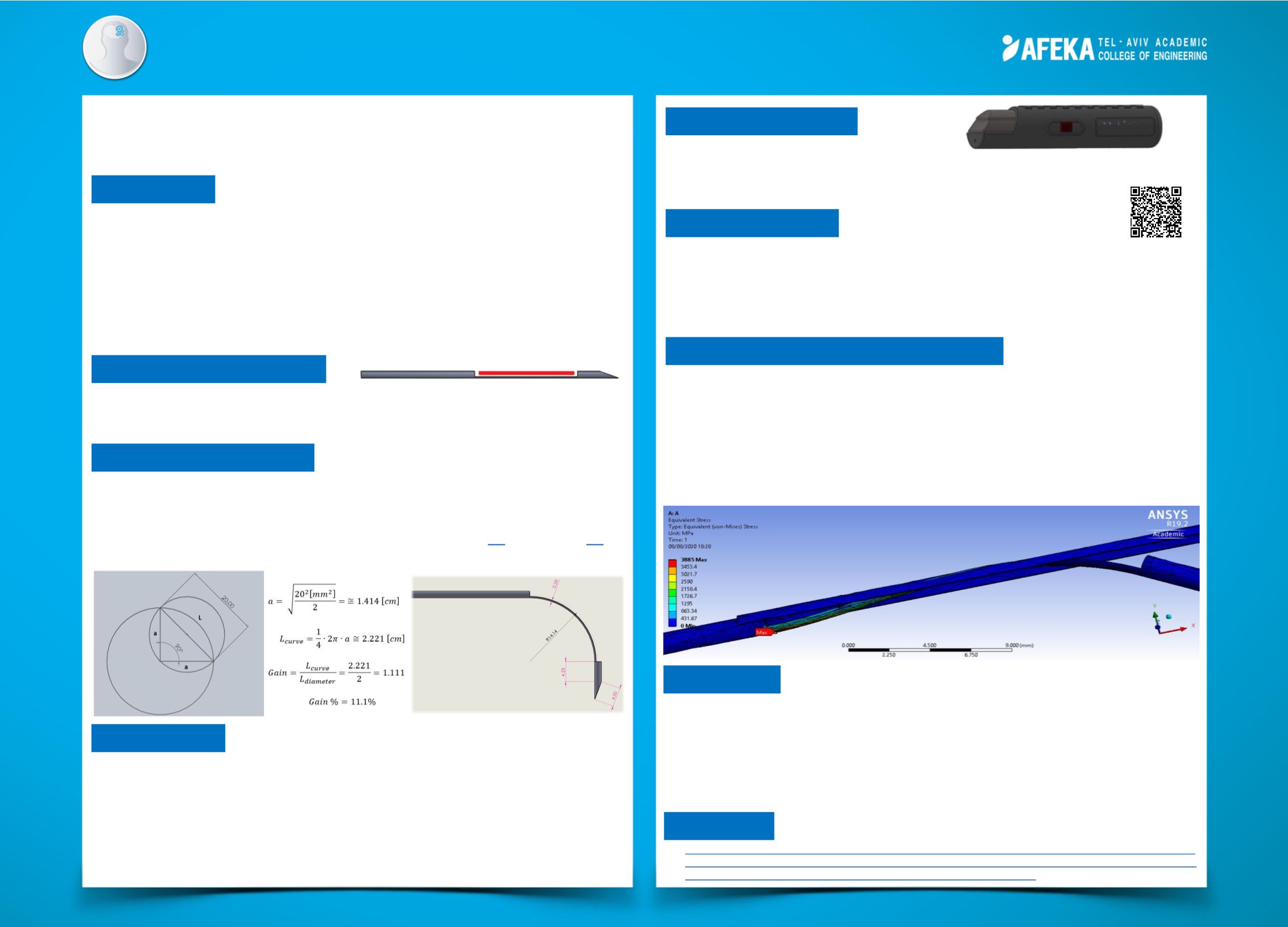

Lymph Node Wide Excision in a
Minimal Invasive Procedure
Moran Cohen, Ravid Shauriki
Advisor: Mr. Assaf Gur
Client: Meir Medical Center
Medical Engineering
The system will consist of a curved inner needle with a side notch and a
sharp outer cannula.
The device will be compatible for a 14-gauge biopsy gun.
The stylet will be made of a material that will remain in the elastic-behavior
part of its stress-strain curve when contracted inside the outer cannula.
The device will allow operating it using one hand.
The main idea of the suggested solution is to manufacture the inner style of
the core-needle biopsy device with a curved notch that will increase the length
of the notch, hence increasing the potential specimen volume. The solution
was proven feasible in two studies conducted in 2008
[1]and 2010
[2] ,in
which manual bending of the notch was performed before using the device.
An enlarged lymph node suspected for a malignancy can be classified into
Hodgkin’s and non-Hodgkin’s lymphoma which should be treated differently.
There can also be other reasons for the appearance of lymphadenopathy.
Minimal invasive methods of lymph node biopsy often do not provide a
sufficient amount of specimen for an accurate diagnosis at the histopathology
lab. This project attempted to offer a new approach for increasing the volume
that is achieved using a core-needle biopsy gun while still maintaining a
minimal invasive procedure.
Introduction:
The Engineering Problem:
The complexity of this project lies in the limited diameter of the device coaxial
cannula. Increasing the potential volume of the stylet notch without exceeding
the cannula or thinning the notch is, at first thought, impossible.
The Suggested Solution:
Potential Volume
Requirements:
One-Hand Operation:
Since the biopsy procedure often requires operating imaging equipment for
the coaxial navigation, the project also suggests an improvement to the
biopsy device handle so that it could be operated using one hand.
Computerized Simulation and Results:
Material Selection:
Based on the results demonstrated in the past curved needle studies, in
which the material wasn’t replaced but only manually bent, keeping the same
material while adding a curvature seems feasible. an inquiry was sent to
Argon Medical Devices Company regarding the materials used in their
"SuperCore" biopsy device, to which they replied with Stainless Steel 304.
computerized simulation was performed based on the Finite Element Method.
The simulation predicts the nature of the notch when being straightened to be
retracted into the outer cannula. Fixed support was applied to the stylet rod
and sectional cannula and a directional force was applied on the lower of the
curved notch to cause deformations. The results demonstrate that the
maximal stress is at the base of the notch and reaches 3885 MPa which is
well above Stainless Steel 304 ultimate tensile strength.
Conclusions:
Increasing the lumen volume in a core biopsy device without increasing the
outer diameter of the device is a complexed engineering problem. The curved
needle solution can, in theory, result in significantly increasing the sample
volume of a lymph node suspected for lymphoma. However the technique is
not practical with the commonly used material stainless steel 304, which is
likely to fracture when the stylet is retracted into the cannula.
References:
1. A. K. Singh, J. Leeman, S. Shankar and J. T. Ferrucci, "Core Biopsy with Curved Needle Technique," 2008. 2. A. R. Karam, W. Nugent, A. Khan, D. Desai and S. Shankar, "Curved stylet core biopsy results in larger cores," American Journal of Roentgenology , vol. 195, pp. 242-244, 2010.















